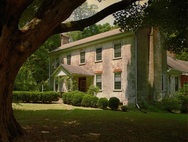 Click image to enlarge.
Click image to enlarge.
 Click image to enlarge. Click image to enlarge. This stately brick Federal Period I-house is a landmark along Pulaski Pike in Huntsville. Constructed during the 1820s, it features stylistic elements found on some of the best homes built in the mid-Atlantic states a generation earlier--during the height of the Colonial era. Rubbed brick lintels and Flemish Bond construction are just two of the sophisticated details used on the exterior of the home. Despite the presence of subdivisions near the property, it retains its rural feel, including a boxwood-lined walkway, large barn, and mature trees. The house and an associated thirty- seven acres have been on the market for several years, but so far no offers have been received. The home needs maintenance work, and it is hoped that new owners will soon be found to care for the house as it enters its third century.
0 Comments
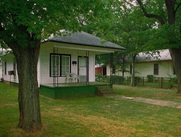 Click image to enlarge. Click image to enlarge. The Lowe Mill Village is one of the state's most outstanding and intact examples of an early-twentieth-century mill village. Lowe Mill started as a cotton textile mill in 1900 and is the only historical textile mill building still standing in Huntsville. In the 1940s it was converted to General Shoe/Genesco and in the 1960s produced most--if not all--combat boots used in the Vietnam War. Within the nominated area lie approximately 400 residential structures and sires demonstrative of the development of the village, from classic shotgun houses to bungalow to pyramidal hipped-roof dwellings. 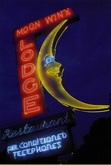 Click image to enlarge. Click image to enlarge. Shown is the Moon Winx Lodge neon sign in the Alberta area of Tuscaloosa. Signs have been a part of the roadside landscape for centuries. In the mid-twentieth century, the introduction of electrified neon signs symbolized the progressive spirit of the age and beckoned travelers to stop at the places they announced. The state boasts revered neon signs, such as the Moon Winx Lodge in Alberta City. But too many signs have been lost, due to neglect and willful destruction. This listing will help to publicize the importance of these vanishing icons. 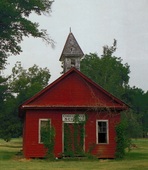 Click image to enlarge. Click image to enlarge. Shown is the Choccolocco School that now sits on the edge of a golf course. A land where bucolic mid-nineteenth-century Piedmont farms are set against a backdrop of some of Alabama's most unspoiled mountain views, the Choccolocco Valley is one of Alabama's most special places. Early homes such as the 1840s Borders House, the two nineteenth-century Choccolocco schools, and Downing's Mill are picturesque and important parts of the historical landscape. In recent years, however, "leapfrog development" has led to the spread of mini-subdivisions and culs-de-sac throughout the area. Without comprehensive planning and zoning, the character of this special region may be completely eroded within a few short years. |
Alabama's Endangered Historic LandmarksEach year since 1994, Alabama Heritage has highlighted threatened historic sites throughout Alabama. The “Places in Peril” list has identified more than 215 imperiled historic resources throughout the state, and is compiled by the Alabama Historical Commission and the Alabama Trust for Historic Preservation. The locations highlight the results of deferred maintenance, perceived obsolescence, development pressures, and lack of funding—forces that now more than ever threaten our cultural legacy. But awareness is a powerful force, too, and can cultivate a renewed determination to be responsible stewards of our heritage. For more information, visit the AHC or the ATHP websites. Alabama Heritage is proud to bring to you a selection of the places designated as perilous. Please keep your comments to information relevant to the featured place in peril. Alabama Heritage reserves the right to delete any comment that we deem inappropriate. Archives
May 2024
|
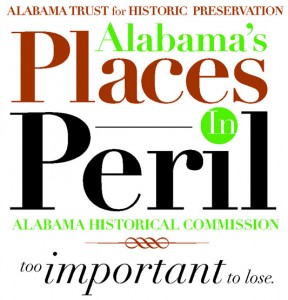
 RSS Feed
RSS Feed